
Headless CMS scales and improves WPWhiteBoard’s content distribution, flexibility, and personalization
Mangesh Nadekar
A headless CMS is a system that separates content management from how it’s displayed, letting businesses send content to websites, mobile apps, or even smart devices through APIs. For e-commerce, this setup is a game-changer because headless CMS connects smoothly with commerce platforms, making it easy to manage product details, promotions, or customer messages across channels.
Sometimes there’s a mix-up between headless CMS and headless commerce platforms, which can be confusing. A headless CMS is all about managing content, like product descriptions or blog posts, while commerce platforms, like Shopify Plus, handle sales and inventory.
Choosing the best headless CMS for your e-commerce business first requires a solid grasp of the fundamental architecture of a headless website and the flexibility it offers.
Before comparing specific tools, it's vital to have a solid understanding of the architectural pattern they fit into. If you're new to the topic, our definitive guide on headless commerce will provide the foundational knowledge you need.
Headless CMS solutions give e-commerce businesses the tools to create flexible, fast, and connected online stores. These benefits show why headless CMS for e-commerce is worth considering, covering both technical advantages and practical business needs, while addressing gaps like the lack of focus on usability for non-technical teams and cost savings.
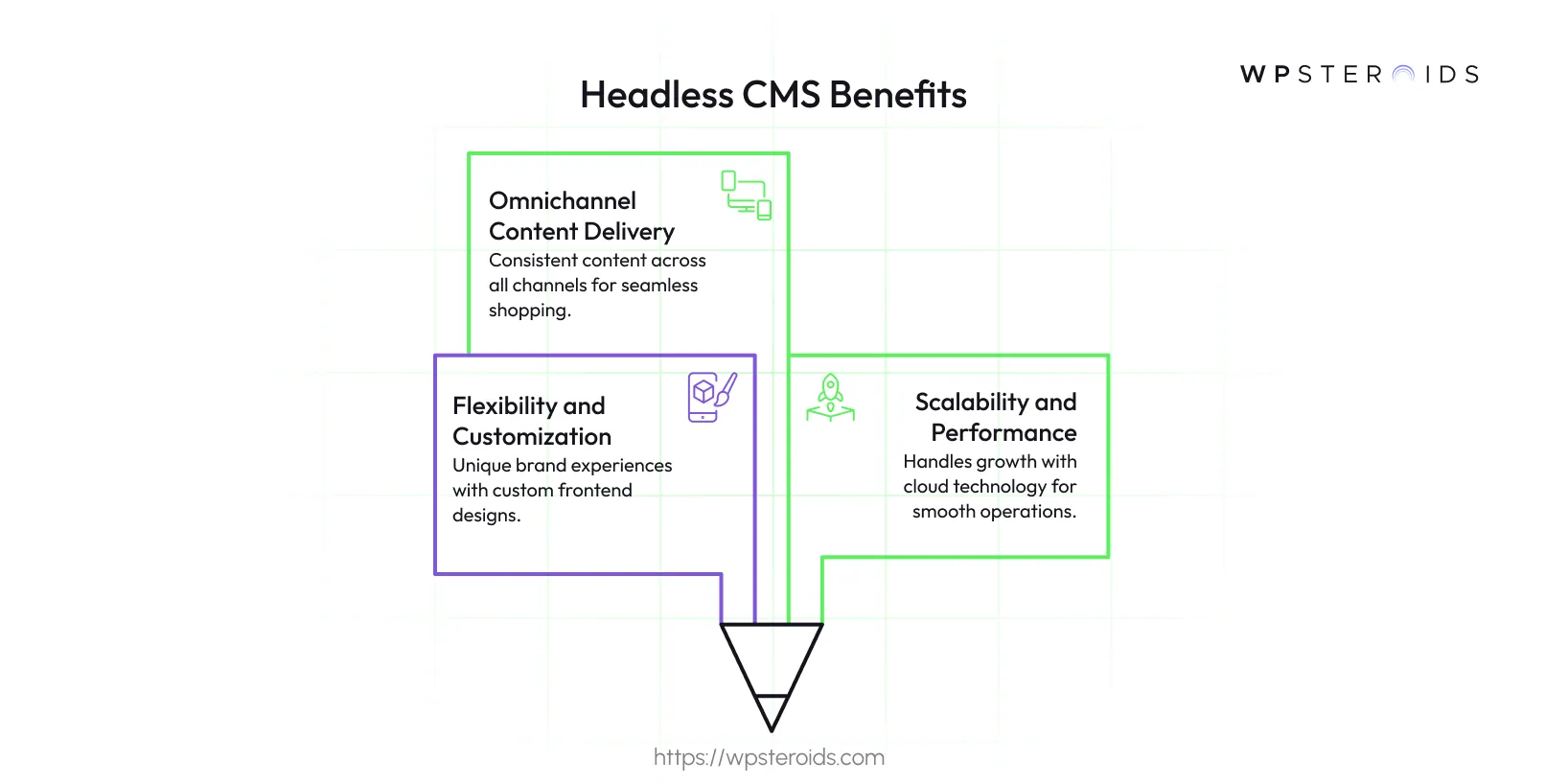
With a headless CMS, businesses can design frontends that stand out, creating shopping experiences that feel unique to their brand. Since the content management is separate from the display, companies can use tools like React or Vue.js to build custom interfaces without being stuck with cookie-cutter templates.
What’s great is that this flexibility isn’t just for developers. Platforms like Storyblok offer visual editors, so marketers or editors can tweak content, like updating a sale banner, without needing a coder. This makes the best headless platforms for e-commerce a win for everyone, saving time and keeping campaigns on track.
Headless CMS platforms are built to handle growth, whether it’s a surge in holiday shoppers or a growing product catalog. Platforms like Contentful or Sanity use cloud technology to adjust to demand, keeping things smooth for businesses with global customers or thousands of products.
Today’s shoppers expect a seamless experience, whether they’re on a phone, a website, or in-store. A headless CMS makes this possible by storing content in one place and sending it to any channel, ensuring everything looks consistent. In fact, a lot of businesses find that headless CMS simplifies delivering uniform content
The move to a headless CMS is often part of a larger strategic shift for e-commerce businesses towards a more agile and composable architecture.
While some CMSs have features tailored for e-commerce, the core choice always comes down to a developer-centric decision framework that evaluates API quality, content modeling, and scalability.
Plus, many headless CMS support new tech, like AI for personalized ads or augmented reality for virtual product previews, keeping businesses ahead.
When building an e-commerce site, choosing the right headless CMS can make all the difference in managing content efficiently and delivering a seamless customer experience. The best headless CMS platforms for e-commerce offer flexibility, scalability, and features tailored to online stores, from product catalogs to promotions.
Strapi is an open-source headless CMS that stands out for its customization, making it a strong choice for businesses needing a tailored headless CMS for e-commerce. Its API-first design lets developers create custom content types and workflows, ideal for unique e-commerce setups like niche retail or subscription services.
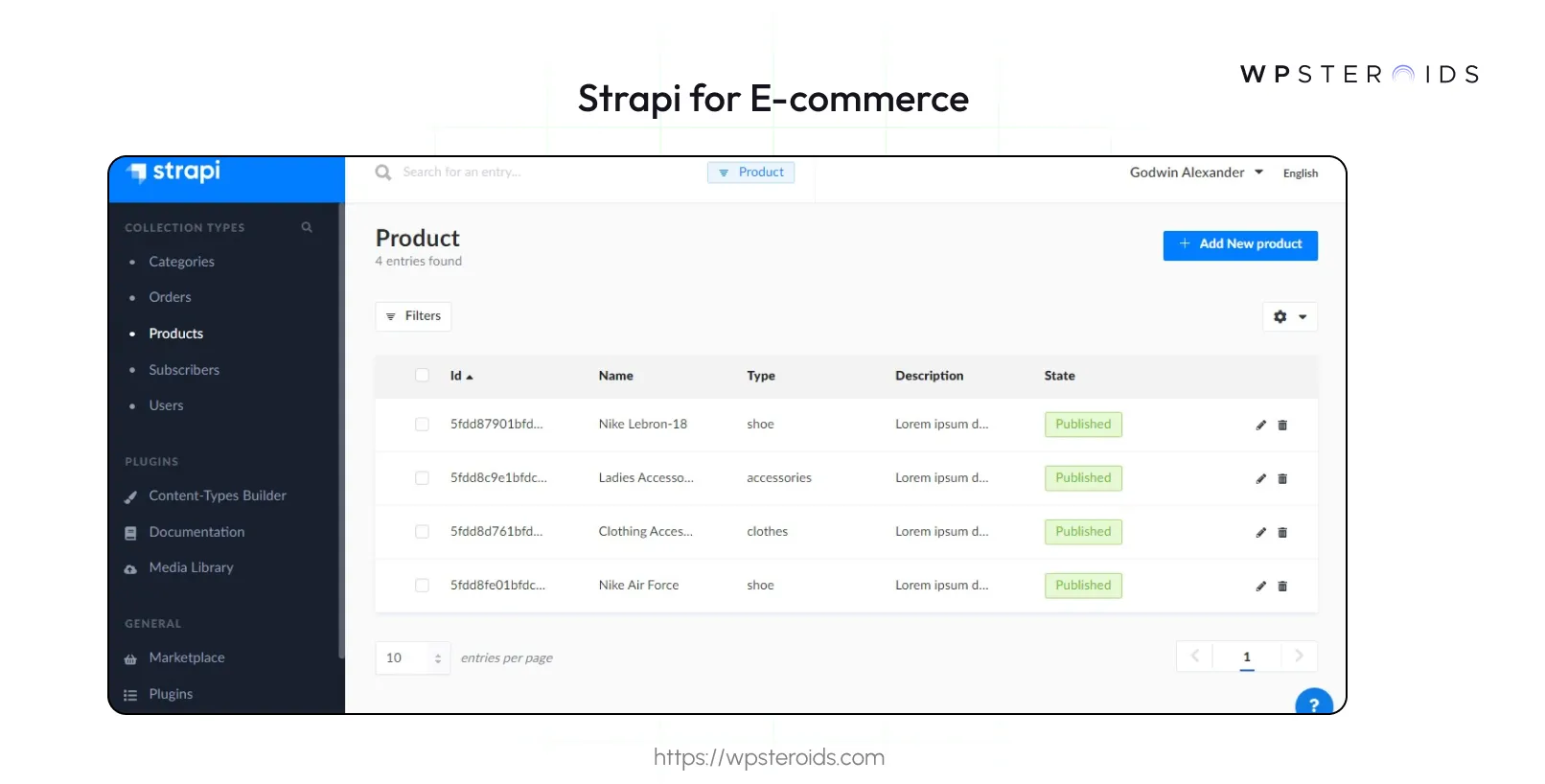
Strapi is an open-source model, which means no licensing fees for the community edition, though enterprise plans offer advanced support. It also supports role-based access, so marketers can manage content while developers handle technical tasks, addressing a gap in usability for non-technical users.
For example, a small e-commerce brand can use Strapi to build a custom product catalog with multilingual support, which is perfect for expanding into new markets. However, it requires technical expertise for setup, which might be a consideration for teams without developers.
Contentful is a heavyweight in the best headless platforms for e-commerce, offering enterprise-grade features for large-scale operations. Its robust content modeling lets businesses manage complex product catalogs and deliver content globally, with built-in localization for over 30 languages.

I find Contentful’s integration capabilities particularly strong, connecting seamlessly with commerce platforms like BigCommerce or Salesforce Commerce Cloud, as well as payment gateways like PayPal. This makes it ideal for enterprises handling thousands of SKUs or running global campaigns. Its pricing starts at $489/month, which suits larger businesses but may be steep for smaller ones.
Sanity is known for real-time collaboration, making it a great fit for e-commerce teams with complex requirements, such as managing dynamic product data or editorial content. Its structured Content Lake allows businesses to organize vast amounts of content. Sanity integrates with Shopify or WooCommerce, enabling real-time updates to product listings or promotions.
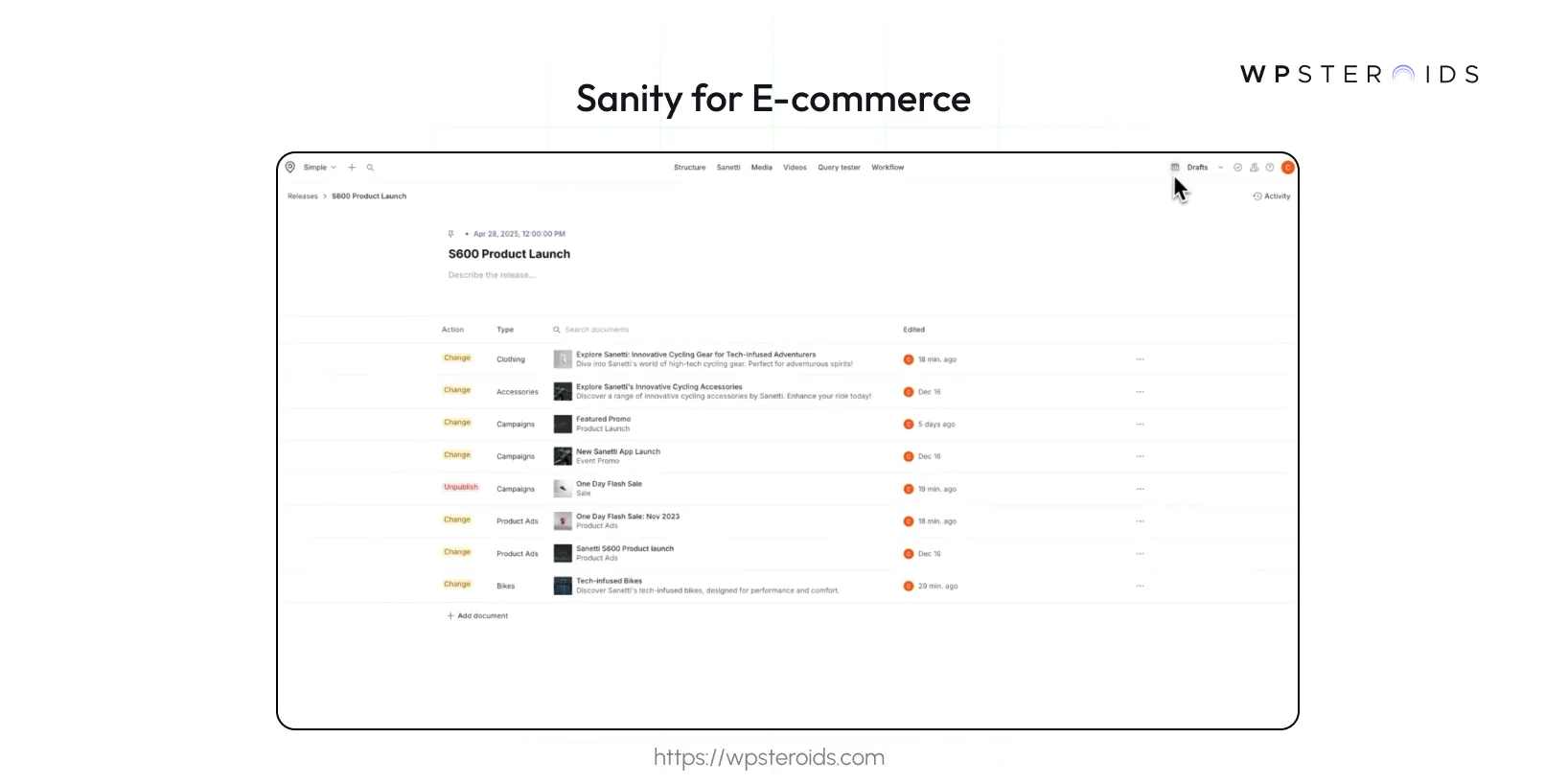
What stands out to me is Sanity’s real-time editing, where multiple team members—marketers, editors, or developers—can work simultaneously, streamlining workflows for fast-paced e-commerce environments. It’s priced flexibly, with a free tier and paid plans starting at $99/month, making it accessible for growing businesses. For instance, a mid-sized retailer could use Sanity to manage seasonal campaigns across web and mobile, with editors updating content in real time.
Storyblok shines with its visual editor, enabling dynamic content creation for a top headless CMS for e-commerce. Its component-based structure lets businesses build reusable content blocks, like product cards or banners, which marketers can rearrange without coding.
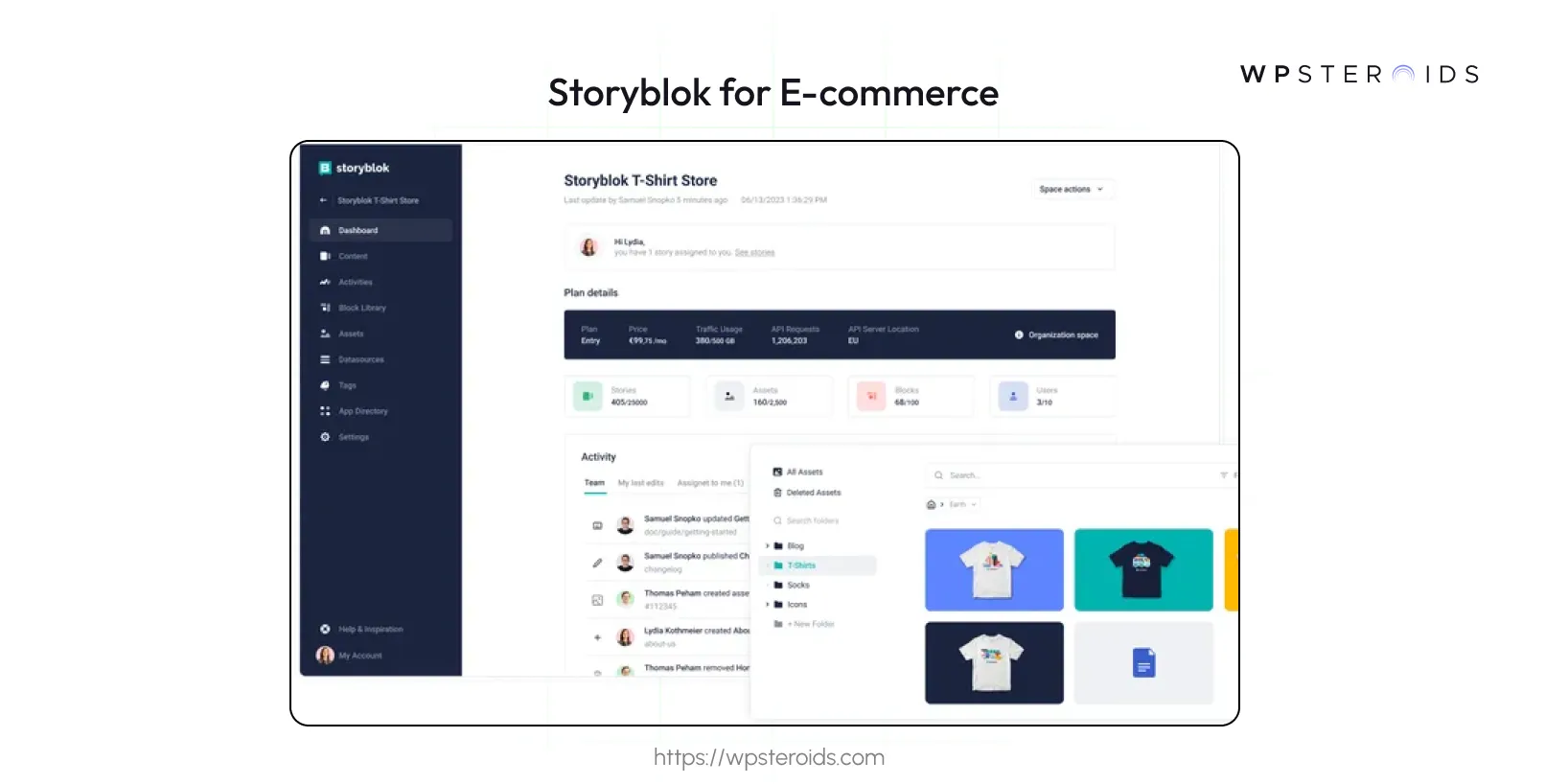
Storyblok supports over 100,000 projects globally, reflecting its ease of use. It integrates with e-commerce platforms like Magento, simplifying content updates for online stores.
Storyblok balances developer flexibility with marketer-friendly tools, addressing a gap in usability for non-technical users. Its visual editor lets marketing teams preview changes live, speeding up campaign launches. Pricing includes a free tier, with paid plans from $99/month, suitable for small to mid-sized businesses.
Prismic offers reusable components and scalability, ideal for e-commerce websites handling high traffic. Its content slices allow businesses to create modular content, such as product descriptions or reviews, that can be reused across pages, saving time.

Prismic’s versioning and scheduling, which let teams plan promotions or product launches, is a key e-commerce feature. Pricing starts with a free tier, with paid plans from $100/month, fitting various business sizes
Choosing the right headless CMS for an e-commerce business involves weighing several factors to ensure it meets both current needs and future goals. The best headless CMS for e-commerce must excel in managing product catalogs, handling promotions, integrating with payment gateways, scaling with growth, delivering content across multiple channels, offering flexible content modeling, and providing a smooth developer experience.
These criteria are critical because they directly impact how efficiently a business can operate and engage customers.
Understanding the pricing structures of headless CMS platforms is crucial for e-commerce businesses aiming to balance budget with functionality. The best headless platforms for e-commerce vary widely in cost, from free open-source options to premium enterprise plans, and choosing the right one involves weighing initial costs against long-term scalability and features.
Additional costs, such as developer resources, hosting, and third-party integrations, also play a role in the total expense. I’ll explore these factors in detail, addressing gaps in prior analyses, such as limited discussion on hidden costs, cost-benefit trade-offs, and pricing transparency, to help businesses make informed decisions about headless CMS for e-commerce.
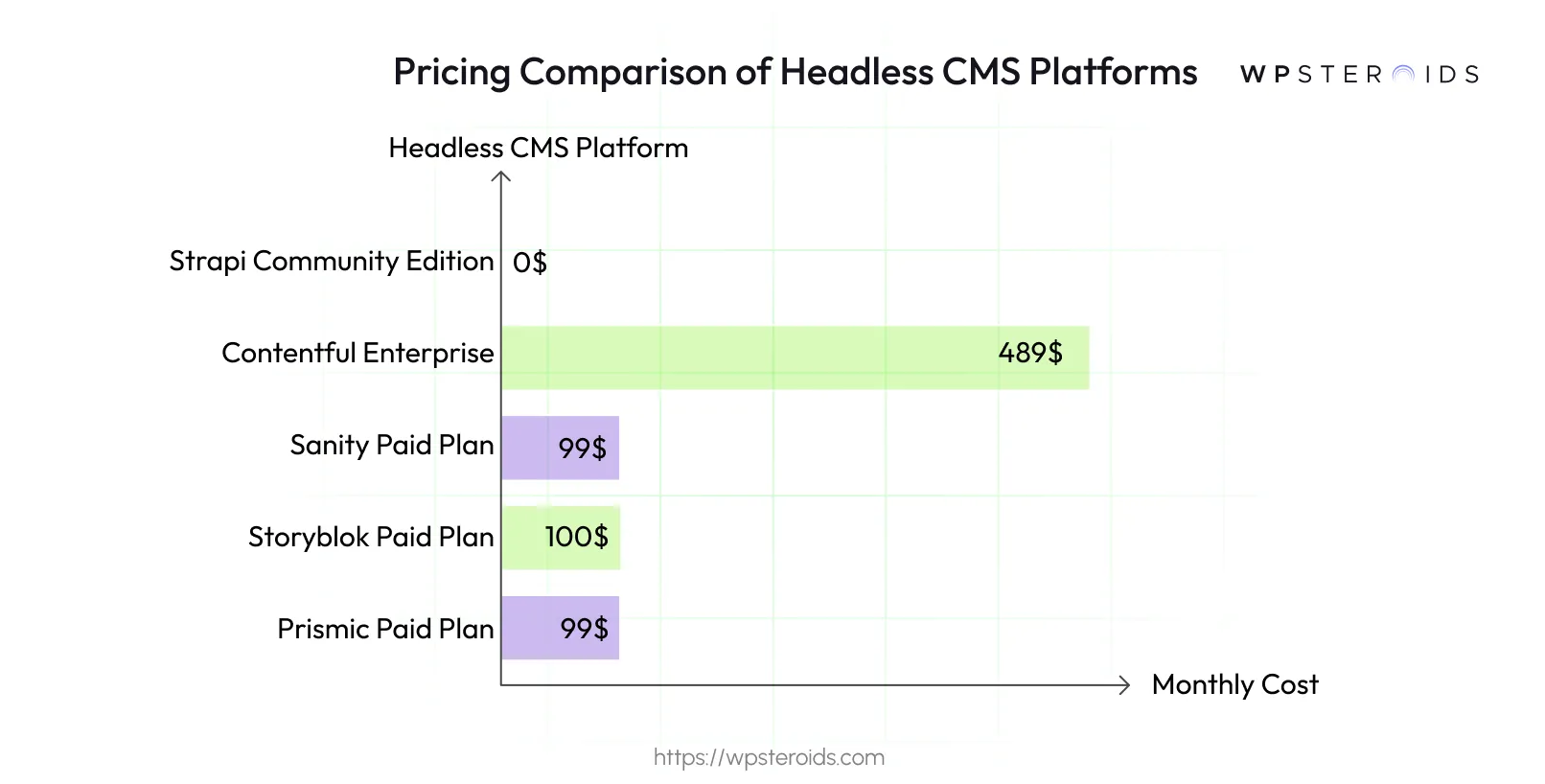
For instance, a startup launching a small online store might choose Strapi’s free edition, hosting it on a cloud server for $10-$50/month, and budget for a developer to set up Shopify integration, costing $1,000-$5,000 initially.
An enterprise with global operations might opt for Contentful at $489/month, leveraging included hosting and localization to save on scaling costs long-term.
Deploying a headless CMS for e-commerce requires specific technical expertise, robust documentation, and accessible support resources to ensure successful implementation. The best headless CMS for e-commerce platforms demands skills in areas like API integration and frontend development, but they also offer tools to simplify the process. Comprehensive documentation, support channels, and training programs are essential for both technical and non-technical teams.
Earlier discussions often emphasized developer requirements without exploring resources for marketers or the long-term support needed for e-commerce operations. I aim to provide a balanced view, covering technical demands and the tools available to meet them, ensuring businesses can implement and maintain the top headless CMS for e-commerce with confidence.
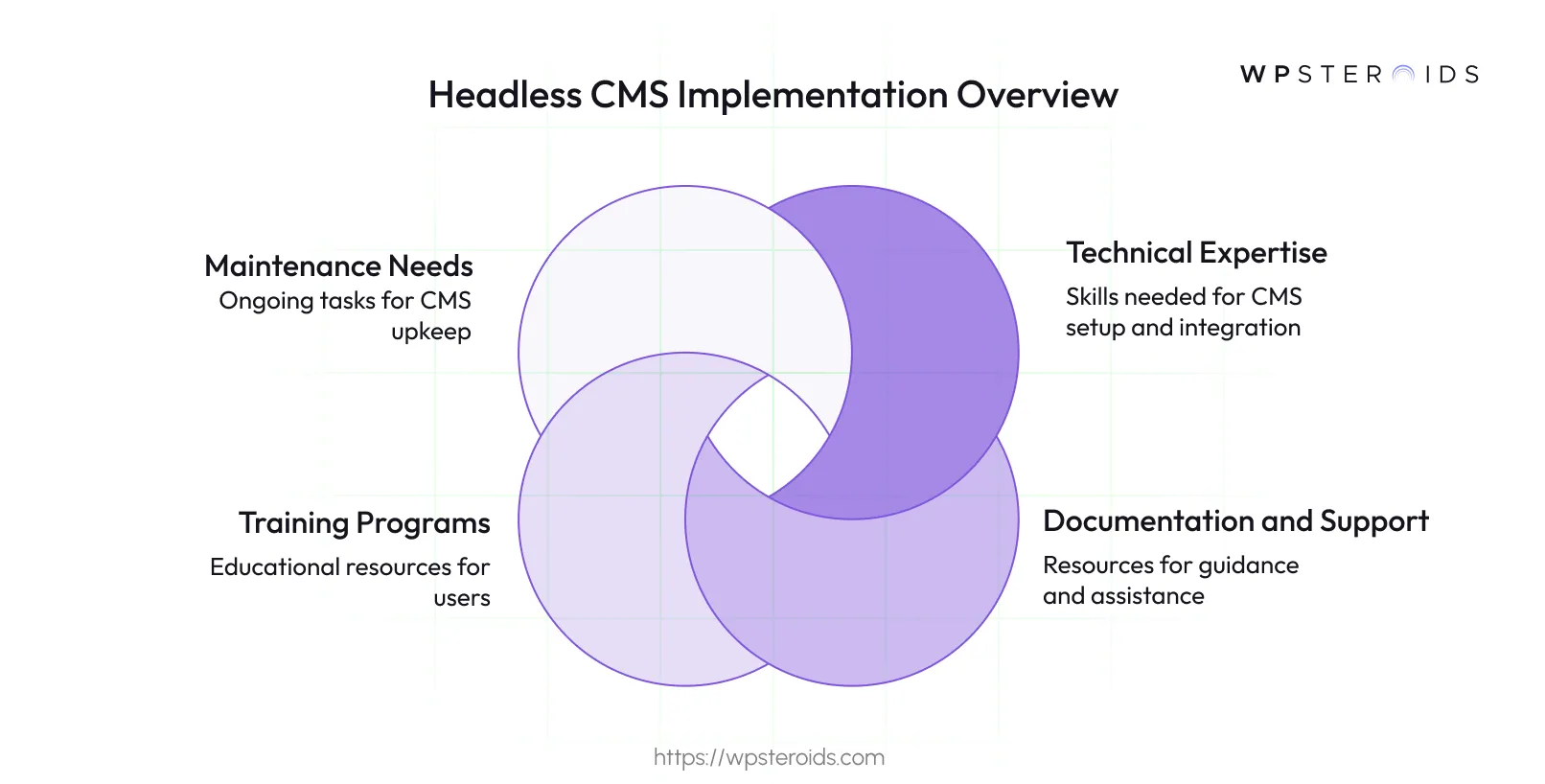
This comprehensive view helps businesses plan for headless CMS for e-commerce implementation, filling gaps in practical resource planning.
Selecting the right headless CMS for an e-commerce business is a critical decision that hinges on aligning the platform’s capabilities with specific business needs, such as scalability, ease of use, and budget. The best headless CMS for e-commerce empowers businesses to deliver seamless customer experiences, manage content efficiently, and adapt to evolving market demands.
While many platforms serve the e-commerce space, teams that require deep customization often look toward self-hosted solutions. If your project demands full control over the codebase and infrastructure, exploring the top open-source options is a worthwhile endeavor.
The top headless CMS platforms for e-commerce address unique needs based on business size:
To fully leverage a headless CMS, businesses must go beyond selection and focus on implementation and optimization strategies. By aligning the best headless platforms for e-commerce with these strategies, businesses can drive sustained growth, delivering exceptional customer experiences in a competitive market.
